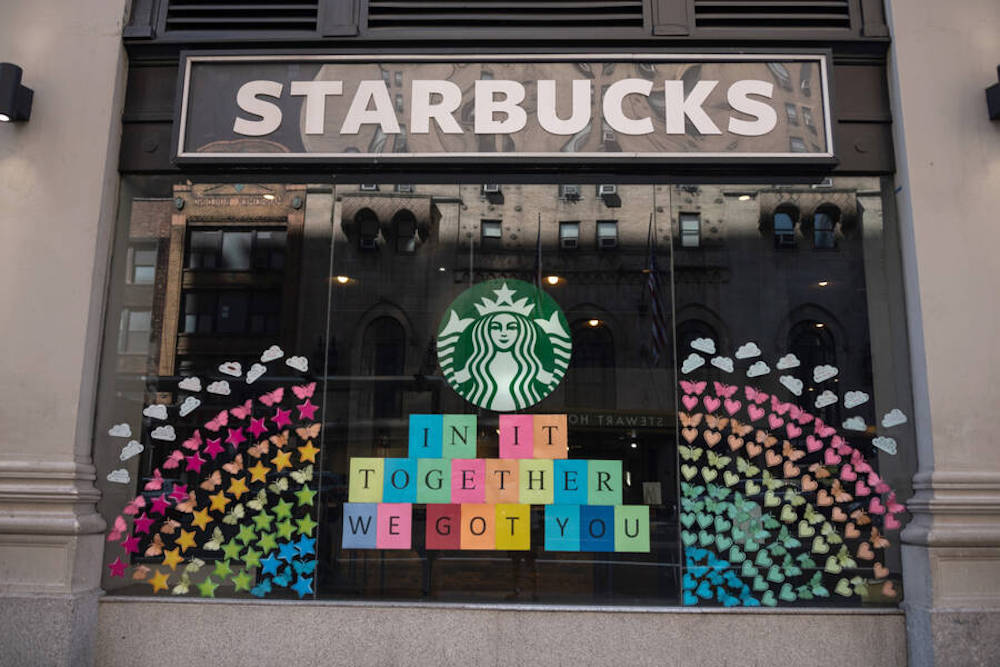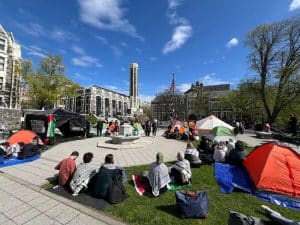The U.S. is currently in the midst of the biggest wave of labor organizing in decades. Everything from Verizon stores to Amazon warehouses are unionizing, the clear result of both decades of neoliberal attacks on the working class and the fallout of the Covid-19 pandemic. Workers are beginning to realize that they are essential and that their bosses are not. There are, however, big differences between the way unions are being formed now and how unions have traditionally operated in the U.S. As Left Voice has discussed, a major trend in this current wave of labor struggle is “grassroots unionism.” That is, rank-and-file workers are increasingly willing to fight the union bureaucracies, which collaborate with the bosses and the Democratic Party, and still control much of the labor movement. Today’s workers have, for example, voted down tentative agreements and, at Amazon, formed their own independent union. Grassroot unionism sets this current moment of labor apart from others. There is, however, another major trend in this new wave of unionism, one that is sometimes known as “social justice unionism.”
The term isn’t new. In fact, it has often been used by the union bureaucrats to contain attempts to fight for social justice within the labor movement. The idea was used by the “new” labor of the 1990s and 2000s as a way of sidestepping real union struggle. The idea was that workers could mobilize with nonprofits outside the workplace instead of fighting on the shop floor. So the old idea of social justice unionism was weak and largely initiated from the top down. But this new generation of unionists is taking up that idea and radicalizing it. Instead of pursuing the toothless measures of previous decades, this current wave of social justice unionism is using a social justice message of class solidarity to build their unions.
This was made clear during the Covid-19 pandemic. While some workers could stay home, others (who were typically Black and Brown) were forced to work in dangerous conditions to keep the economy somewhat functional. As the death toll climbed and the state did practically nothing to keep workers safe, many began to see the connections between the pandemic and larger instances of injustice.
The political moment that birthed this wave of labor struggle was defined not only by the pandemic but also by the Black Lives Matter movement. With uprisings across the country, millions took to the streets to protest state-sanctioned violence against people of color. This movement evolved to include deep discussion of the other ways that American capitalism disenfranchises the specially oppressed. From attacks on Black lives to attacks on trans rights, it became clear to many that the state and the system don’t work for anyone but the bourgeoisie.
Another major aspect of the current political situation is the unprecedented attacks on democratic rights and the specially oppressed. From the rollback of voting protections to the effective outlawing of abortion in many states to the all-out war being waged on trans children, we are in a moment in which the Right is advancing. And as all this happens, we see a near-total absence of any movement on the streets or any meaningful working-class resistance to it.
Thus, we arrive at the current moment. Workers are increasingly aware not only of their position as workers but also of the ways that the class antagonisms foundational to capitalism produce the very forces that oppress them in their other identities. Queerphobia, racism, ableism, sexism, and xenophobia are all by-products of a system that divides workers to make us easier to exploit and oppress. Increasingly, the artificial lines between “bread and butter” issues like pay and hours and “social justice” issues like fighting oppression have begun to fray as a newly politicized generation steps onstage. This generation, nicknamed Generation U (as in union), is increasingly queer, politicized, and aware of the need for racial, gender, environmental, and disability justice.
This is, in part, because of how most unions function. Typically, unions are under the tight control of their bureaucracies, which follow the party lines of their Democratic allies and try to push their members off the streets and into the voting booth. Furthermore, most unions have typically been hesitant to take up the fight against special oppression — outside of empty statements of support offered in lieu of action. This limits the scope of the union and, by extension, the political weight of the organized working class as a whole. In a moment when we are seeing escalating attacks on the specially oppressed, it is vital for workers to understand that we have the power and the duty to defend ourselves and our coworkers against these attacks from the bourgeoisie.
This new trend of social justice unionism represents an important move in this direction and is the result of workers increasingly seeing the connections between their own oppressed identities and their role as exploited members of the working class. For example, workers at the Amazon warehouse in Staten Island talk explicitly about being Black and Brown and how they view fighting for better conditions at their workplace as part of the struggle for racial justice. One organizer at Amazon spoke to Left Voice about how she viewed being queer as driving her fight to unionize. When teachers in Minneapolis went on strike a few weeks ago, one of their main demands was that the school district do more to hire and retain BIPOC educators. Starbucks has a disproportionately high number of trans workers, who are helping lead the fight for better conditions in their workplaces.
This harkens back to some of the nascent worker actions we saw during the 2020 Black Lives Matter uprisings. From bus drivers refusing to help the police transport arrested protesters to the dockworkers’ union shutting down ports on the West Coast in solidarity with the protests, 2020 showed that the artificial divisions placed between the specially oppressed and workers were beginning to break down.
This wave of social justice unionism is also an important retort to the class-blind identity politics that have defined much of neoliberalism. For years we were told that identity is the primary unifier — a tactic that ensures that bourgeois members of those identity groups can hold influence over movements of the oppressed and divide those movements from the broader working class. Now, members of the working class are increasingly realizing that class, much more than identity, unites us and, in order to fight for the liberation of our identities, we must reject any incursion into our movements by our class enemies.
As the current wave of unionization spreads across the country and across industries, it will be important to continue developing real class consciousness across all identity-based divides placed on the working class by capitalism. Taking this consciousness to its natural conclusion can be explosive, since it means that the only way to abolish the oppressions of capitalism is for the working class to fight back, winning gains for itself and the diverse communities and identities of its members, against the masters who want to divide it. There is, of course, the danger of co-optation, since the bureaucracies are going to want to fold this new wave of energy in the labor movement into the mild and reformist unionism that talks a good game without really fighting a classwide battle. So, to resist this, we must recognize that, given that the primary divides in capitalist society are class divides and that all other divisions multiply from there, the working class can rely only on itself. Only we can liberate ourselves. Liberation won’t be achieved by any of the self-styled bourgeois allies or their cronies in the bureaucracies of the labor and social movements or the NGOs. Social justice will be won only through the unified force of the working class.
If we are to win a more just and equitable society, it will be through the organized efforts of the working class and oppressed, working together against our oppressors and exploiters. Vital to that process is retaking our unions and making them into the strongest weapons at our disposal. This will not only be done through social justice unionism but also class struggle unionism — the process of reorienting unions to fight for the whole working class. Workers are beginning to wake up to the interconnectedness of our struggles, and we should all do whatever we can to make sure that their consciousness continues to deepen and radicalize.











